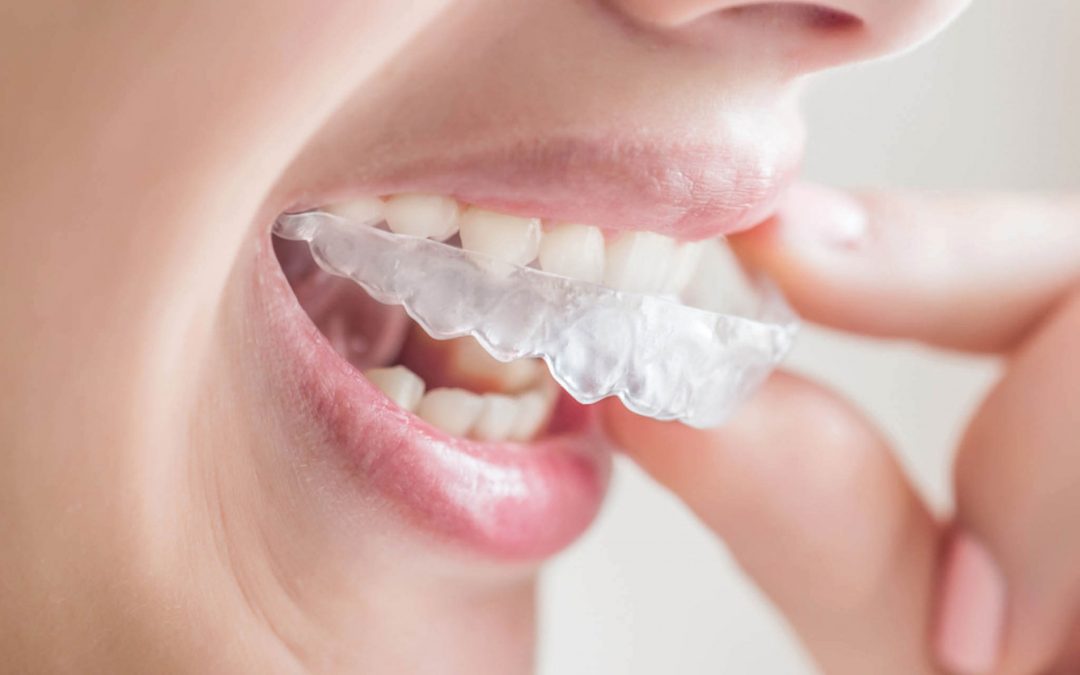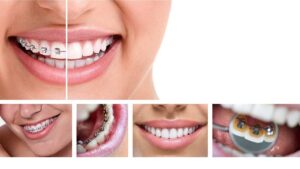Are you thinking of getting Invisalign braces to fix your overbite? Then reading this article will be beneficial for you. There are some important facts about this orthodontic treatment that you must know before opting for it. So to start with, “Can Invisalign fix overbite?”
Well, yes, it can. From mild to moderate misalignment of teeth can easily be treated with Invisalign. But if you have a serious issue with an overbite, then Invisalign will not be able to benefit you in that way. However, if you have a massive overbite, then we will suggest you wear braces. Let’s know about this orthodontic treatment in detail.
What is Invisalign?
Just like other orthodontic treatments, Invisalign corrects the position of misaligned teeth and ensures a more beautiful smile. Not only teeth positioning, but also if you have an overbite, underbite, or crossbite, Invisalign can be your best trait, depending on the severity of the issue.
However, the whole treatment is done using clear plastic aligner molds, which gradually move the teeth back to its right position. But you need to wear it at least 20 hours a day. You can easily maintain your oral health while wearing these plastic trays. Do not worry about the fittings, as your orthodontist will make a personalized one for you.
Benefits of Invisalign
Before getting Invisalign, many patients give thought to wear traditional braces. Here is why you must choose Invisalign treatment over braces to fix your overbite.
- Invisalign incorporates removal plastic trays which eliminate the need to wear glued brackets with wires.
- Digital imaging is used to design the trays; hence you get a more precise treatment.
- Maintaining basic oral hygiene is very easy with Invisalign.
- Both teenagers and adults can undergo this treatment.
How long does it take to fix an overbite with Invisalign?
It is not easy to predict how long Invisalign can take to correct your overbite. The time of completing the treatment varies on the seriousness of the issue. However, in average cases, it takes 6 to 36 months to fix an overbite.
What can Invisalign not fix? [Specific Orthodontic Issues]
Invisalign has brought a revolutionary change in the field of orthodontic treatment. Though, some orthodontic issues cannot be cured with Invisalign. Let’s have a look at the limitations of Invisalign. It will give you a better understanding of whether or not you’re a good fit for Invisalign.
- Tooth shaping
If you are dealing with problems like pegged teeth, short round teeth issues, then Invisalign will not suit you. These issues will prevent the aligner from working properly for moving your teeth into the correct position.
- Tooth positioning
If you have problems like rotated teeth or mouth overcrowding, then Invisalign will not suit you. If your molars rotate more than 20 degrees, then Invisalign cannot move your teeth into the required position. If you have the teeth rotational issue in your premolars, canines, and incisors, then it is impossible to apply Invisalign. Therefore, if your teeth are tilting backward or forward more than 45 degrees, then Invisalign will not suit you.
- Large gaps between teeth
Invisalign can recover a 6mm gap between your teeth. However, if you have larger gaps, then Invisalign is unable to recover those gaps.
- Midline movements
If you have a front teeth midline problem, then we will suggest you go for some other orthodontic treatment instead of Invisalign. The Invisalign can recover the midline discrepancy by 2mm. So, if you have a major issue, then Invisalign will not help you.
- Intrusion and Extrusion
If you require a major teeth intrusion and extrusion treatment, then Invisalign is not going to help you. Invisalign can make a limited movement in your teeth. So, if you want to raise or lower your teeth into an extreme position, then you can try braces.
- Previous dental work
If you have crowns or porcelain veneers, then Invisalign may not be applied because it will prevent Invisalign from binding the surface. Therefore, if you have a dental bridge, then it is impossible to use Invisalign.
- New dental work
The orthodontists always examine if you have any previous dental treatment before ensuring Invisalign. You cannot go for other dental treatment until the Invisalign treatment is completed.
- Tooth extraction
If you require tooth extractions before or during the Invisalign treatment, then Invisalign can’t fix your dental issue.
Which is better for overbite: braces or Invisalign?
According to the recommendation of orthodontics, braces treatment is better for a severe issue than Invisalign, though Invisalign is also effective in fixing an overbite. However, Invisalign can fix your overbite up to a certain range. On the other hand, braces more effectively work on major overbite issues.
Can I eat with Invisalign on?
We will recommend not eating with Invisalign; it can damage the trays while chewing the food. Therefore, Invisalign can get stained while eating foods. Sometimes the food may stick between the Invisalign tray and teeth. So, you must remember to remove the Invisalign plates while eating or drinking. However, you can always drink water while putting on the Invisalign. It will not stain the clear plastic trays.
In a nutshell: Who is suitable for Invisalign?
Invisalign treatment is not recommended for everyone. Though your orthodontist will prescribe you the best option, the below list will give you a fair idea beforehand.
- If you have a mild or moderate overbite issue, then Invisalign is suitable for you.
- Pegged teeth or too short teeth will prevent your Invisalign from working properly.
- If your tooth rotates too much, then Invisalign can’t help you to get the proper alignment.
- When you are going through teeth extraction treatment, you cannot apply Invisalign.
- In case your baby teeth are still present, or if some of your teeth are missing, then Invisalign is not suitable for you.
- If you have crooked teeth, then Invisalign will not help you to fix them.
That’s all! We’ve shared everything regarding Invisalign treatment. If you have further queries, get in touch with us through the comment box below.
Sources:
- Khosravi, R., Cohanim, B., Hujoel, P., Daher, S., Neal, M., Liu, W., & Huang, G. (2017). “Management of overbite with the Invisalign appliance”.
https://www.sciencedirect.com/science/article/pii/S0889540616308861 - Phan, X., & Ling, P. H. (2007). “Clinical limitations of Invisalign”.
http://www.cda-adc.ca/jcda/vol-73/issue-3/263.pdf - Shin, K. (2017). “The Invisalign appliance could be an effective modality for treating overbite malocclusions within a mild to moderate range”.
https://www.sciencedirect.com/science/article/pii/S1532338217301938 - Nanda, R. (1997). “Correction of deep overbite in adults”.
https://europepmc.org/article/med/9023063

